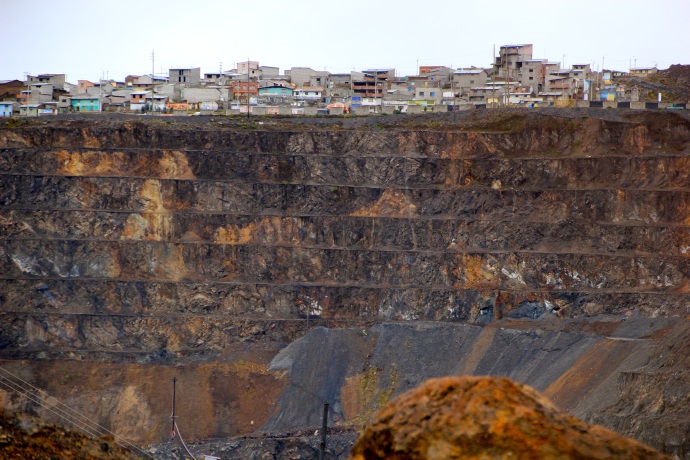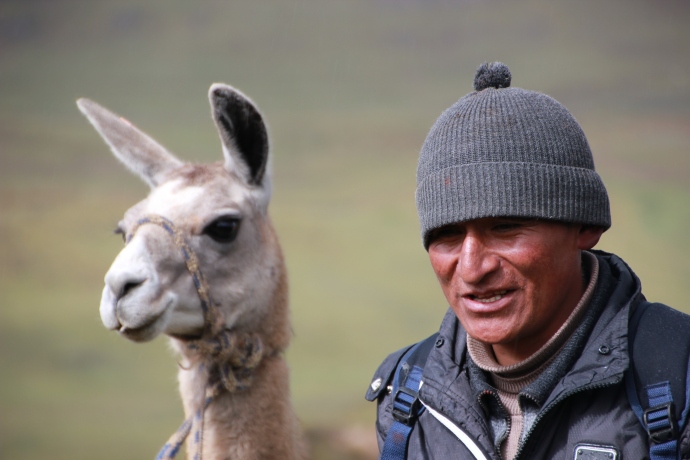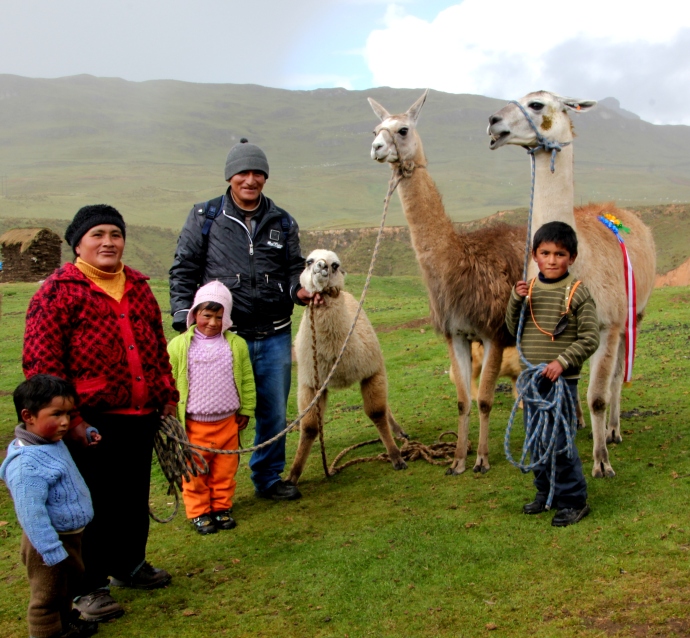 Up until now, I’ve spent a lot of time swooning over the alpaca, while paying precious little attention to its camelid cousin, the llama. So in my last blog about Peru (boo hoo!) I’m aiming to rectify the matter.
Up until now, I’ve spent a lot of time swooning over the alpaca, while paying precious little attention to its camelid cousin, the llama. So in my last blog about Peru (boo hoo!) I’m aiming to rectify the matter.
The llama doesn’t get much respect in many places in Peru– it’s the shaggy, blue-collar cousin of everybody’s favorite cuddle-bug, the alpaca, and the irresistible, Audrey Hepburn-channeling vicuna.
But in reality, the llama is a working class hero – capable of carrying 35 kilograms of potatoes on its back, trudging long distances without breaking a sweat or requiring too much water, reproducing without drama, and providing tons of meat when it’s required to make the ultimate sacrifice.
To see the best llamas the world has to offer, we traveled to one of the worst cities I’ve ever seen: Pasco, Peru. Heifer’s charismatic country director, Alfredo Garcia, insisted I go to Cerro de Pasco (at 14,200 feet, one of the highest cities in the world) because he wanted me to see firsthand the destruction that mining has wrought …and boy, did I. The irony is that the countryside around Pasco is staggeringly beautiful, reminding me of nothing so much as Paradise Valley, Montana.
Yet when you enter Pasco City, you understand the meaning of “Something evil this way comes.” The mine isn’t near the city, it has consumed the heart of the city in a huge, gaping hole oozing rusty rainbows of effluents pooling into foul, oil-slicked ponds, billows of suspicious fumes, and enormous, variegated hills of toxic mine tailings. It’s a monstrous cavity in the maw of the drab, gray, cold city. 
Cerro is the mining company plumbing for riches here in copper, zinc, gold and silver, and it employs most of Pasco City’s residents. It’s hard to imagine anyone choosing to live here or, god forbid, raise children in this toxic waste dump, but my Heifer translator Rosaluz Salazar assured me that having a job in the mines is a coveted position in Peru, something that kids from the countryside aspire to.
Which makes the work Heifer is doing, supporting the tradition of raising llamas in 800 families in 13 agricultural communities around Pasco so critically important. We visited Iscaycocha, a community of 60 people who are part of this Heifer/FODESA project to celebrate a community greenhouse, witness a Passing on the Gift ceremony, and adore some spectacular llamas.
The day was chilly and looked like rain, but when we walked into the 1-year old greenhouse it was toasty warm as Luis Basilio Ramirez and his wife Yaqueline Mesa greeted us. The greenhouse was built by members of the community, with Heifer providing materials and FODESA (a local NGO that’s been working here for 17 years) giving technical advice. It was placed at the Ramirez house because its proximity to the road means all the families can easily come for the robust harvests, and because Yaqueline, crippled in a car accident three years ago, was seriously depressed and needed something to grow. That’s just the kind of close-knit, caring communities that Heifer tends to create (“The projects teach us brotherhood,” one participant said simply.)
Now Yaqueline waters, plants, and oversees the organic garden that provides lettuce, tomatoes, beets, cauliflower, carrots, coriander, cilantro, cabbage, radishes and fava beans to family & neighbors who literally have never had vegetables in their diets before. (At 14,000 feet, there is no growing season without a greenhouse.) And those vegetables taste particularly beautiful with the llama meat that Heifer has helped these breeders to produce, promote, market and sell.
For years, llama meat (like llamas themselves) was considered dirty, and vastly inferior to alpaca. But these prime breeders of Pasco are producing such high-protein, low cholesterol, super-clean meat with their award-winning llamas, they have quadrupled its price– and their business plan (written with a Heifer advisor) is to market their llama meat regionally and nationally, with specialties like llama burgers, llama sausage and llama hot dogs winning over dubious hearts & stomachs.
As we watched a third generation of really spectacular Heifer llamas being passed on from one Iscaycocha family to another, the sun came out, candy was thrown to celebrate, and the mining and environmental degradation of nearby Pasco City felt a million miles away. Where God willing, it will stay.
Goodbye for now, beautiful Peru!












